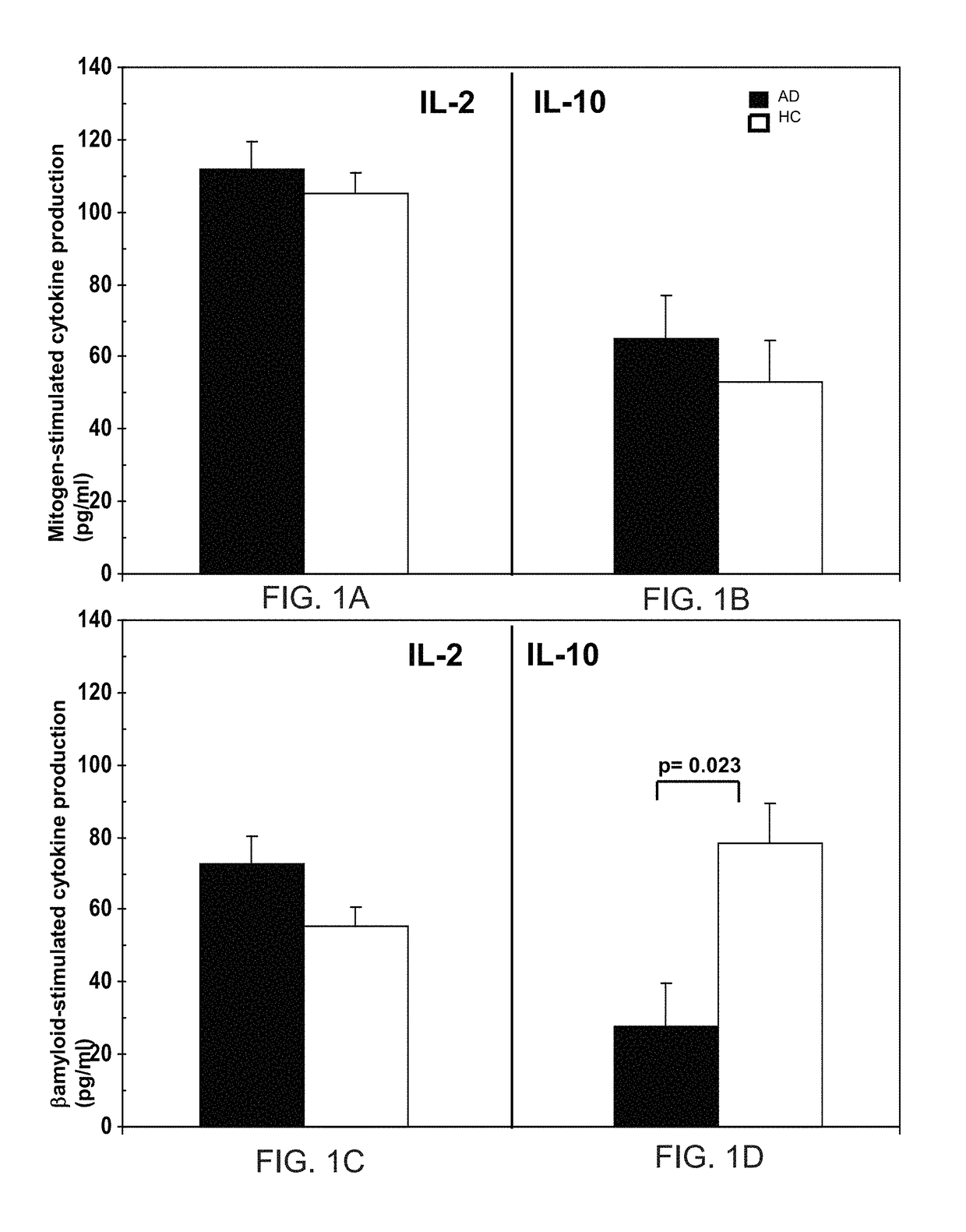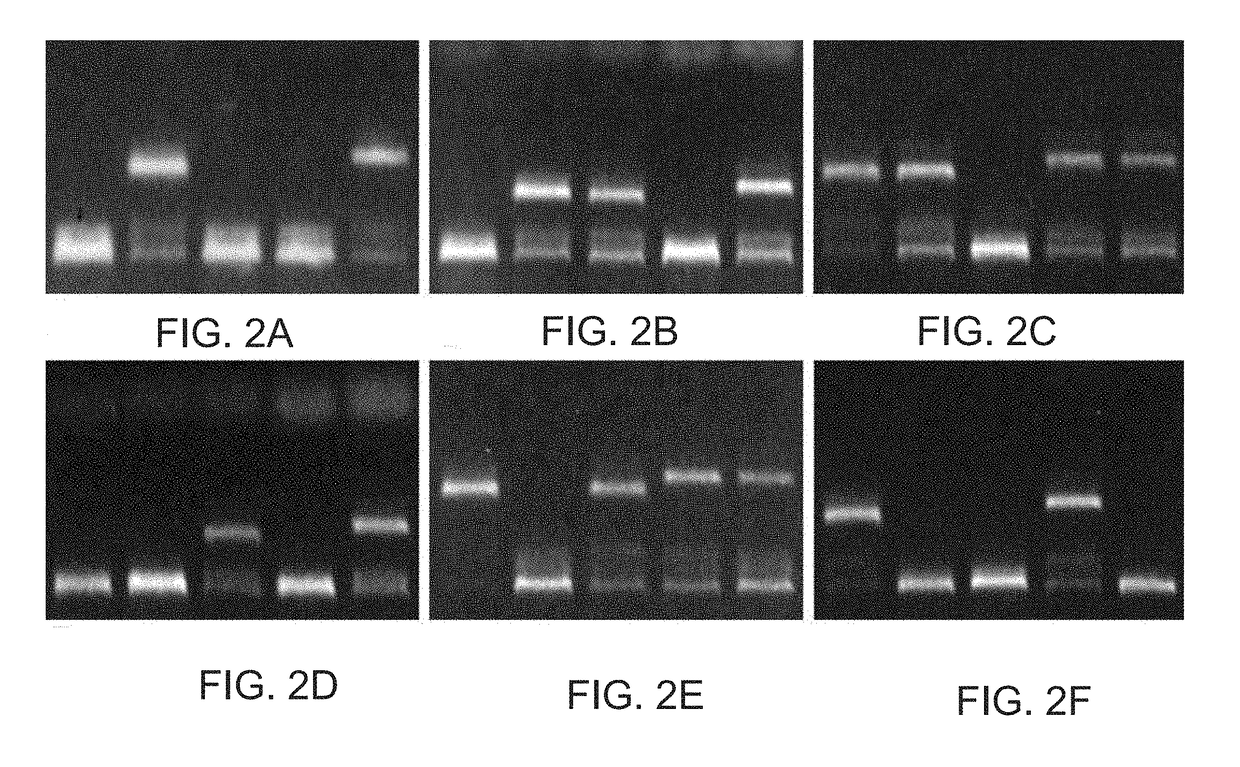Markers of alzheimers disease
a technology of alzheimer's disease and alzheimer's disease, which is applied in the field of alzheimer's disease markers, can solve the problems of only being able to confirm the diagnosis of alzheimer's disease, and cannot guarantee the development of the disease, so as to reduce the ifn-gamma level, slow down the ad, and accelerate the ad progression
- Summary
- Abstract
- Description
- Claims
- Application Information
AI Technical Summary
Benefits of technology
Problems solved by technology
Method used
Image
Examples
example 1
[0085]Patients and Controls
[0086]Forty-seven AD patients and 25 non-demented subjects (HC) were included in a study of Alzheimer's disease. These patients were selected from a larger population sample followed at the Geriatric Department of the Ospedale Maggiore IRCCS, University of Milan, Italy. The DMS IV and NINCDS-ADRDA (23) criteria were adopted to obtain the clinical diagnosis of AD. Cognitive performances and alterations were assessed according to the Mini-Mental State Evaluation (MMSE). AD patients and HC were living at home and were carefully physical examined on the day of blood collection and their clinical records evaluated. In order to minimize the risk of clinical or sub-clinical inflammatory processes, all the patients were selected as follows: only AD and HC without clinical sign of inflammation (e.g. normal body temperature or absence of concomitant inflammatory disease) were included in the study. Blood chemical parameters were also evaluated and subjects with abno...
example 2
[0105]Patients and Controls.
[0106]Sixty-five AD patients (44 F / 21 M, mean age 80+2) and 65 non-demented sex- and age-matched healthy controls (HC) were enrolled. The patients were selected from a larger population sample followed at the Geriatric Department of the Ospedale Maggiore IRCCS, University of Milan, Italy. We applied the DMS IV and NINCDS-ADRDA (23) criteria to obtain the clinical diagnosis of AD; every subject had a recent brain magnetic resonance imaging (MRI) / computed tomography (CT) scan available. Cognitive performances and alterations were assessed according to the Mini-Mental State Evaluation (MMSE). AD patients and HC were living at home and a careful physical examination was done on the day of blood collection, and their clinical records were consulted.
[0107]In order to minimize the risk of clinical or sub-clinical inflammatory processes, subjects were selected as follows: only AD and HC without clinical signs of inflammation (e.g. normal body temperature, no conc...
example 3
[0140]It is commonly accepted that Alzheimer's disease (AD) pathology starts years to decades before the onset of cognitive symptoms (78). This fact explains why symptomatic AD consistently represents an advanced stage of AD pathology (79).
[0141]Amyloid plaques and neurofibrillary tangles are the pathological hallmarks of AD. However, considering AD as a single, well-defined entity has become an obstacle to lucid analysis of the problem of dementia in old age. Whereas in early-onset patients AD might be best designated as a purely degenerative disease with an important role for amyloid-beta in the pathogenesis, in late-onset patients (LOAD) the probability of finding other abnormalities is increased (80-82). To date, 90% of all AD patients in the population are older than 75 years, and 75% of patients are over 80 years of age (83). This support that aging and pathophysiological changes it induces may be concauses of AD onset and progression in elderly and raise the need to find nove...
PUM
| Property | Measurement | Unit |
|---|---|---|
| volume | aaaaa | aaaaa |
| telomere length | aaaaa | aaaaa |
| polymorphic | aaaaa | aaaaa |
Abstract
Description
Claims
Application Information
 Login to View More
Login to View More - R&D
- Intellectual Property
- Life Sciences
- Materials
- Tech Scout
- Unparalleled Data Quality
- Higher Quality Content
- 60% Fewer Hallucinations
Browse by: Latest US Patents, China's latest patents, Technical Efficacy Thesaurus, Application Domain, Technology Topic, Popular Technical Reports.
© 2025 PatSnap. All rights reserved.Legal|Privacy policy|Modern Slavery Act Transparency Statement|Sitemap|About US| Contact US: help@patsnap.com



